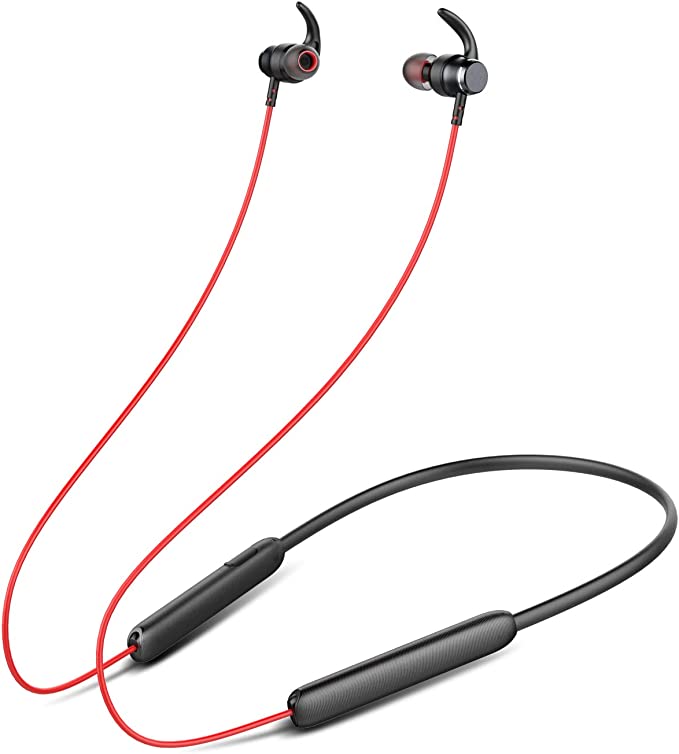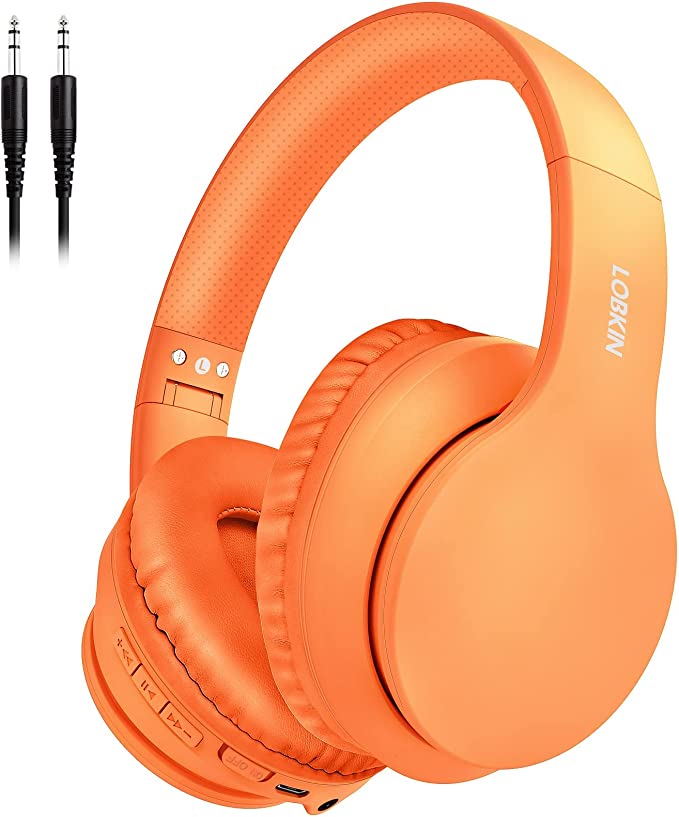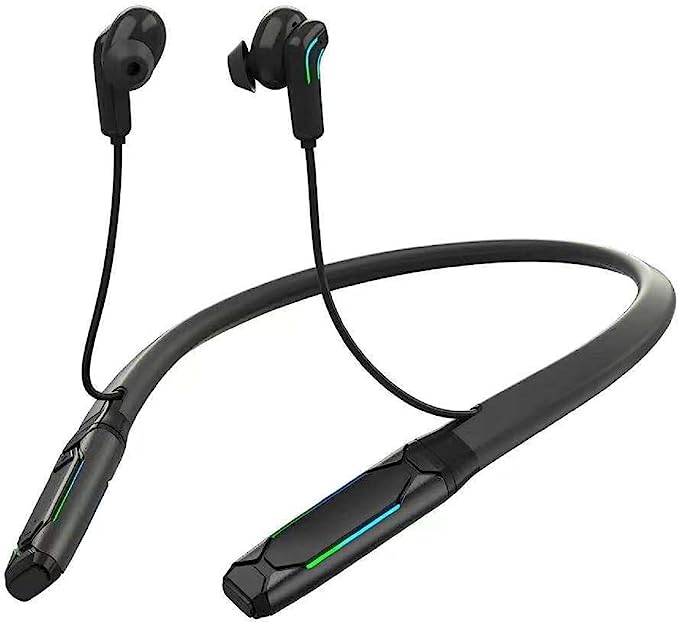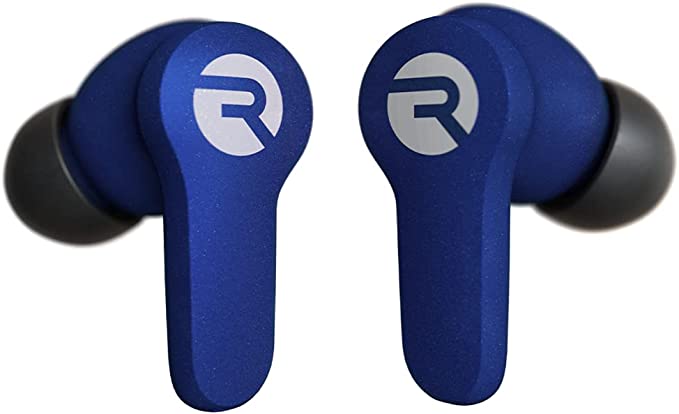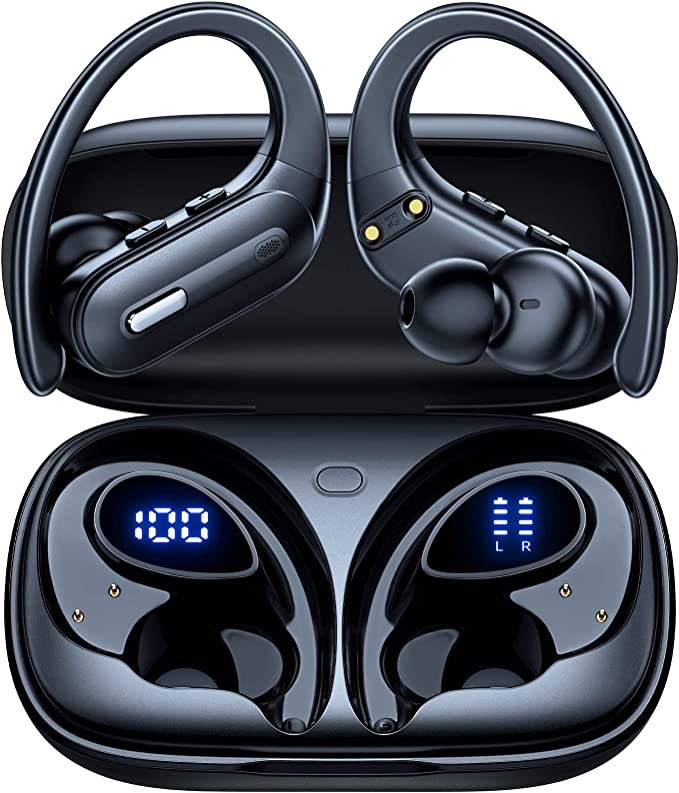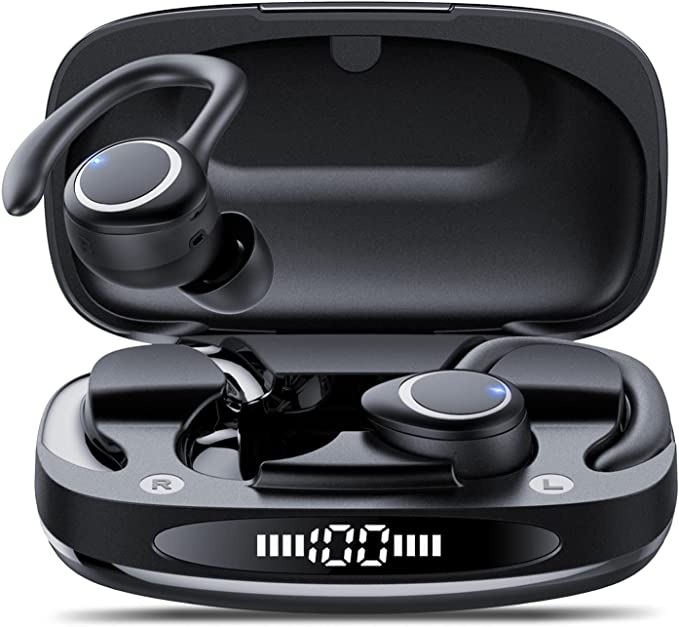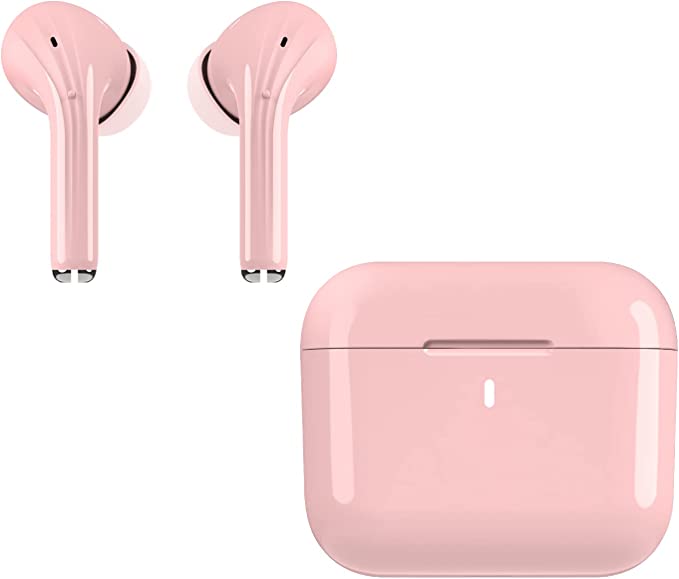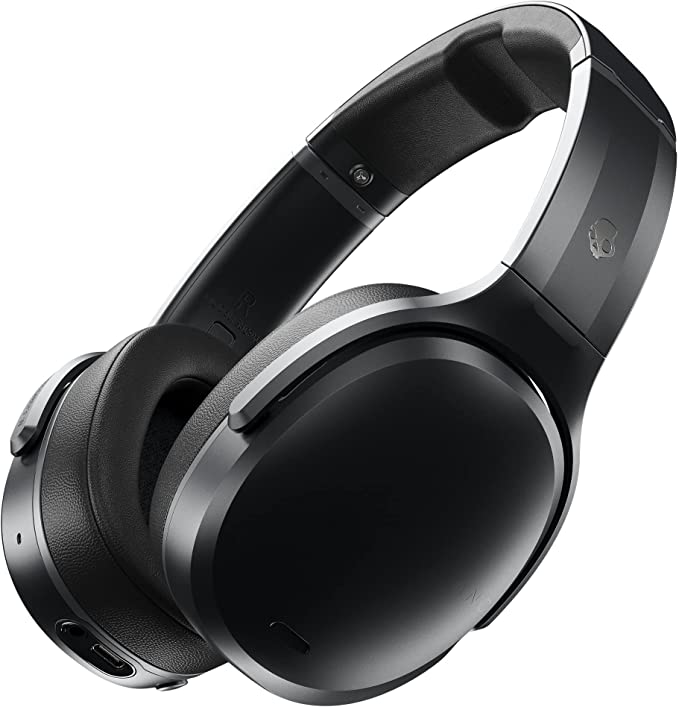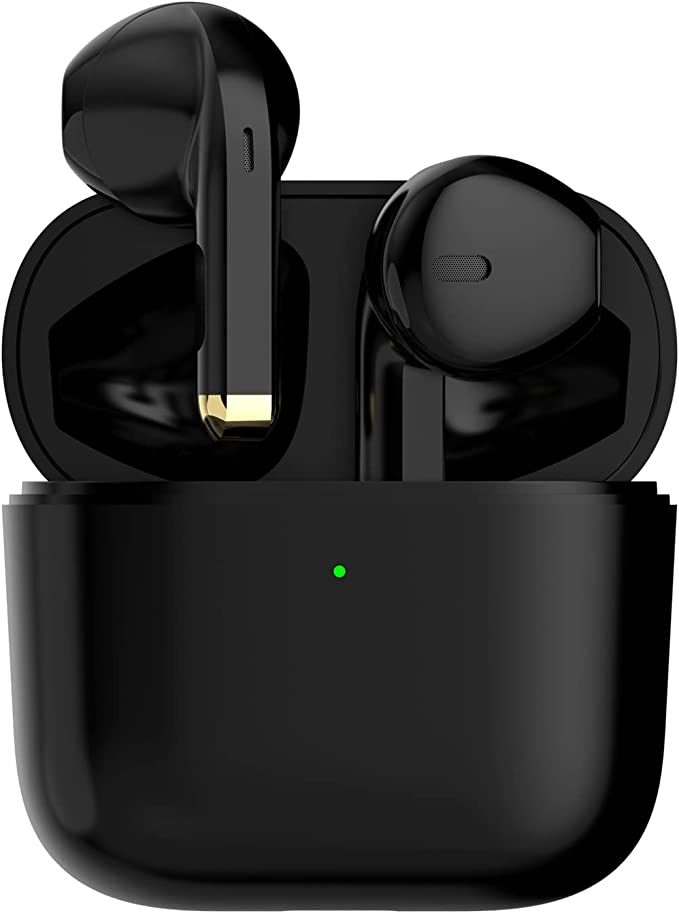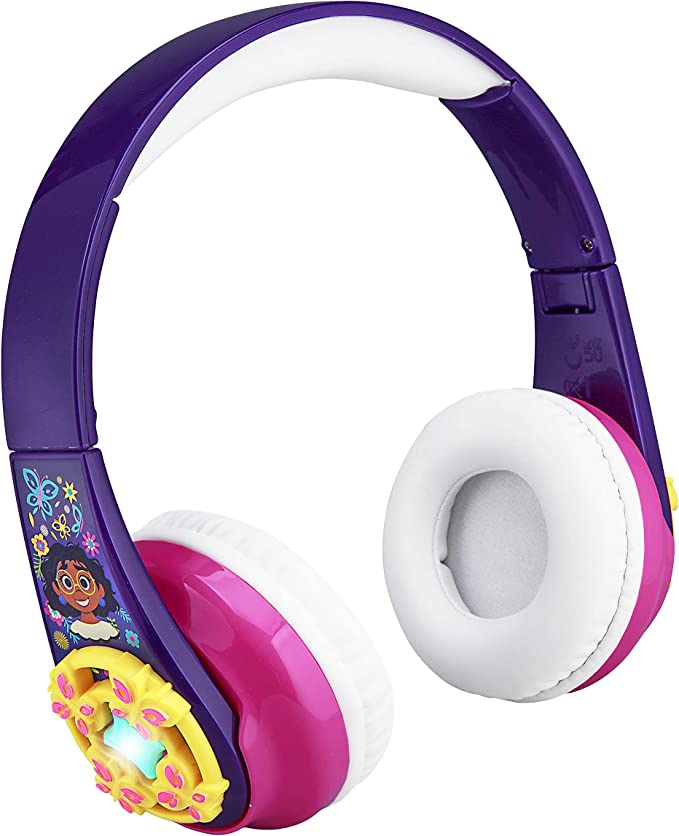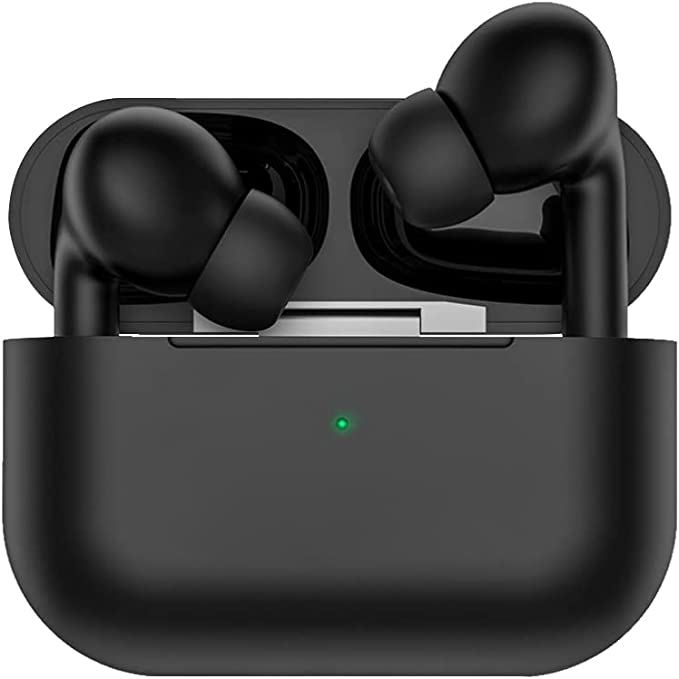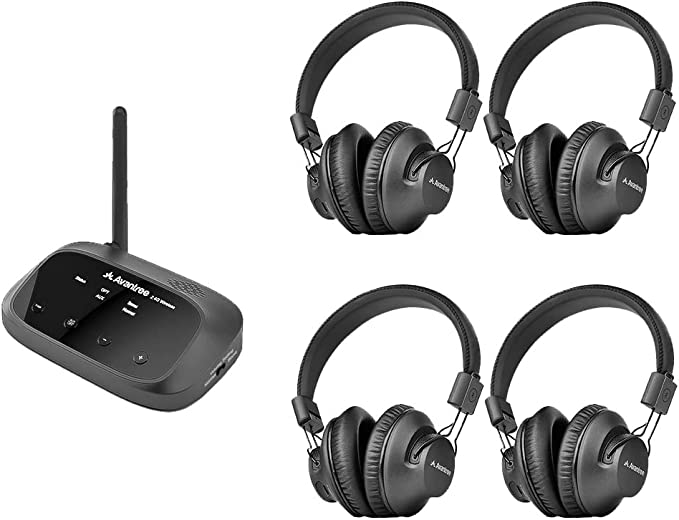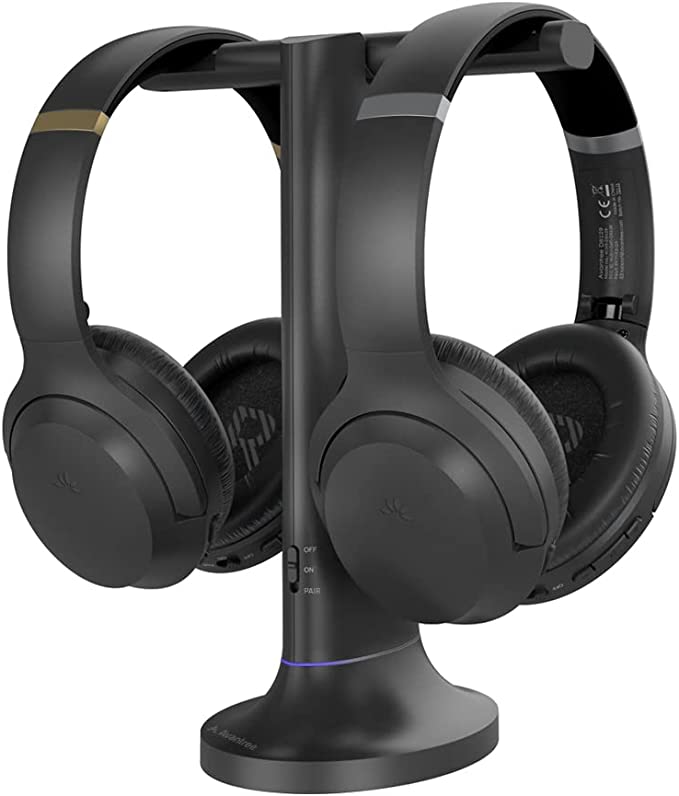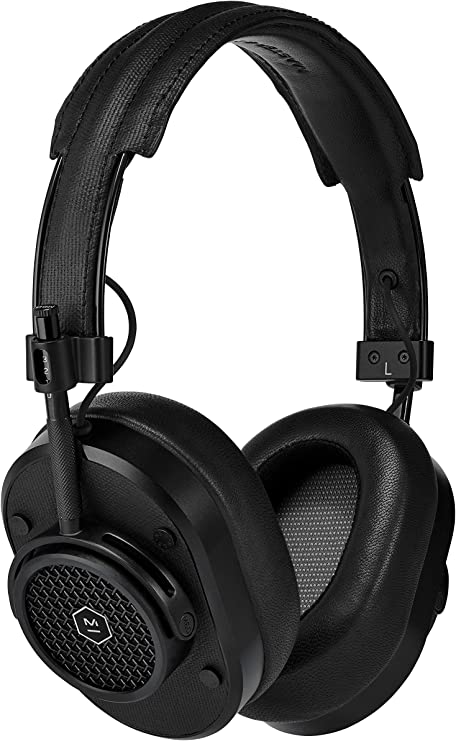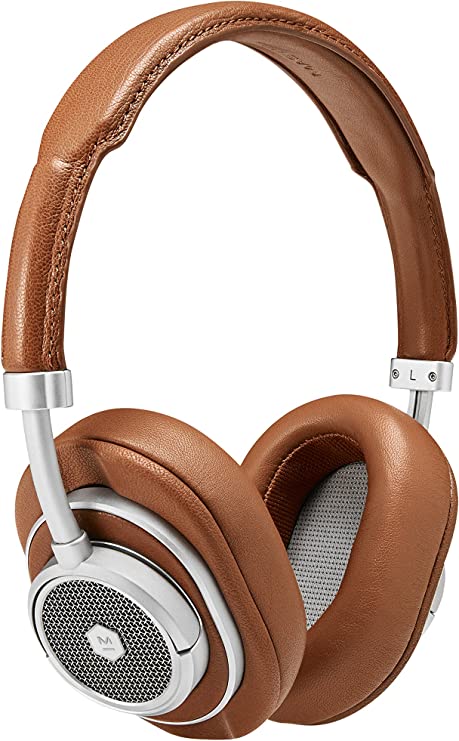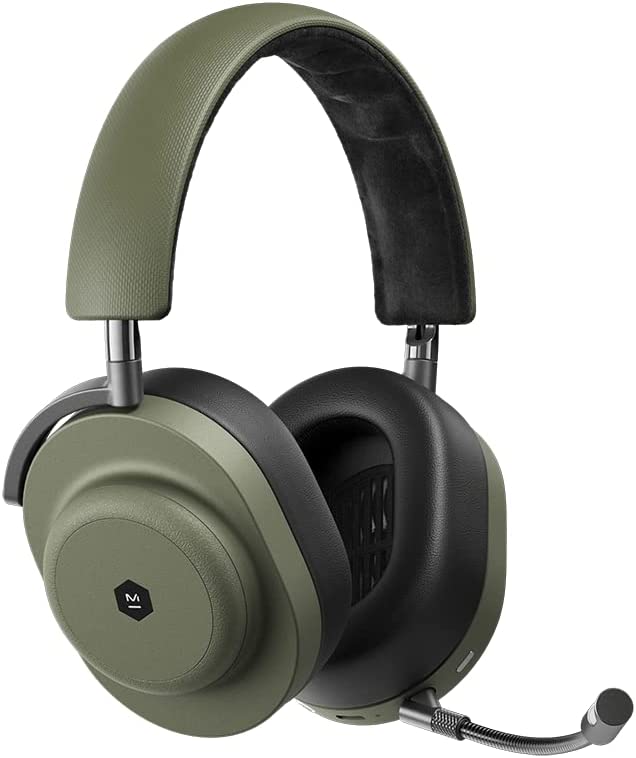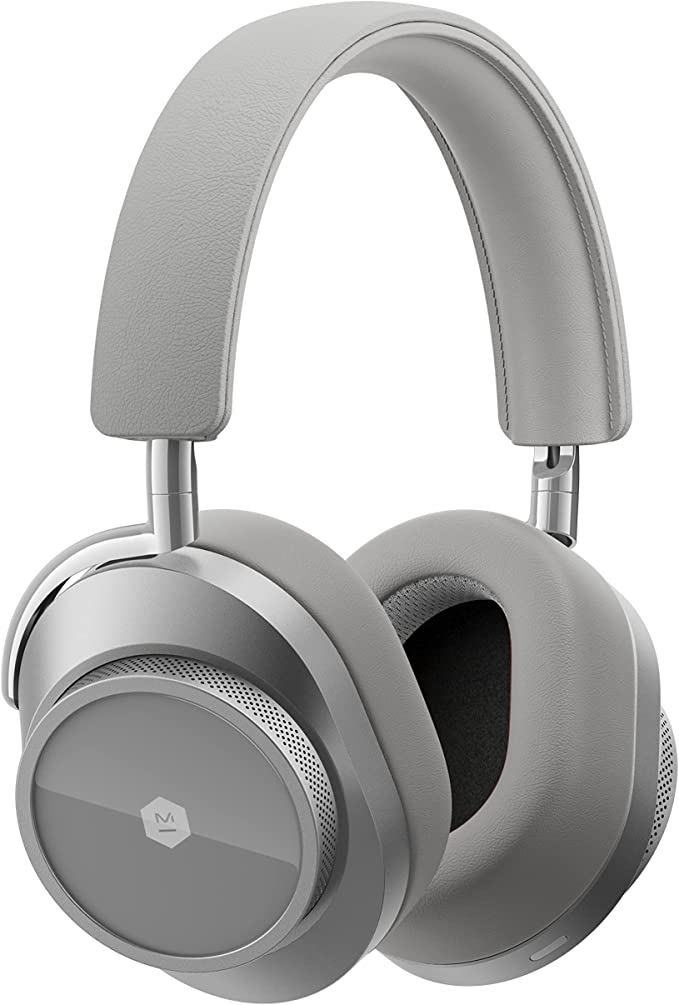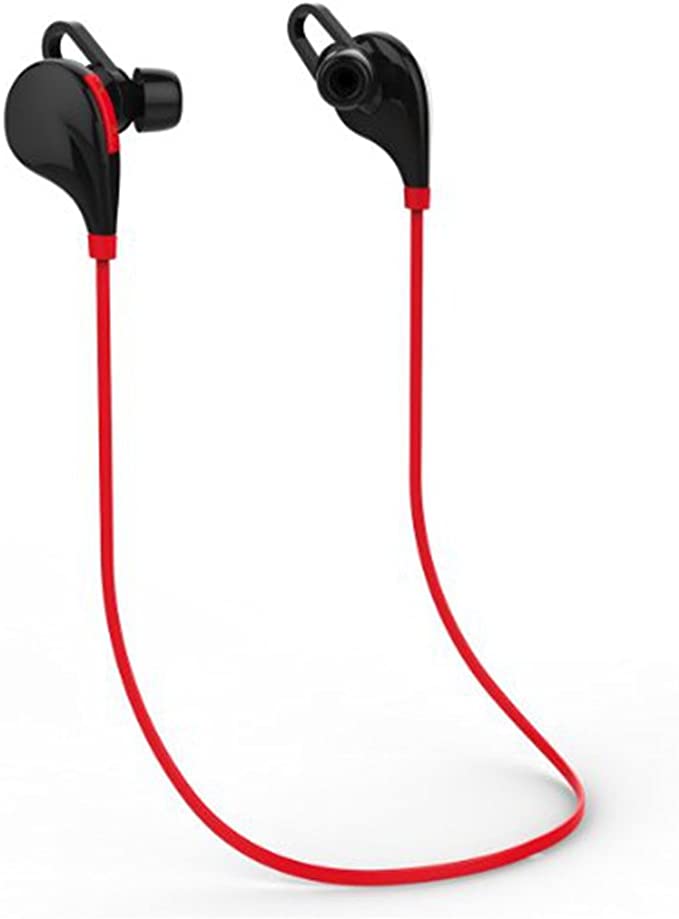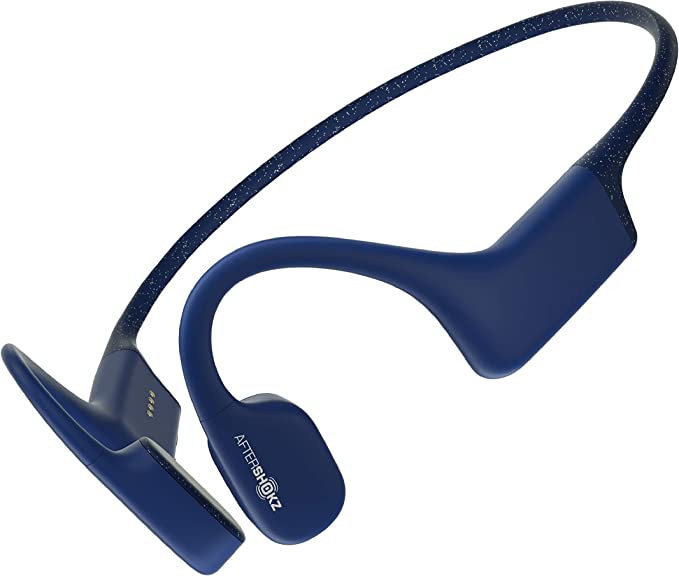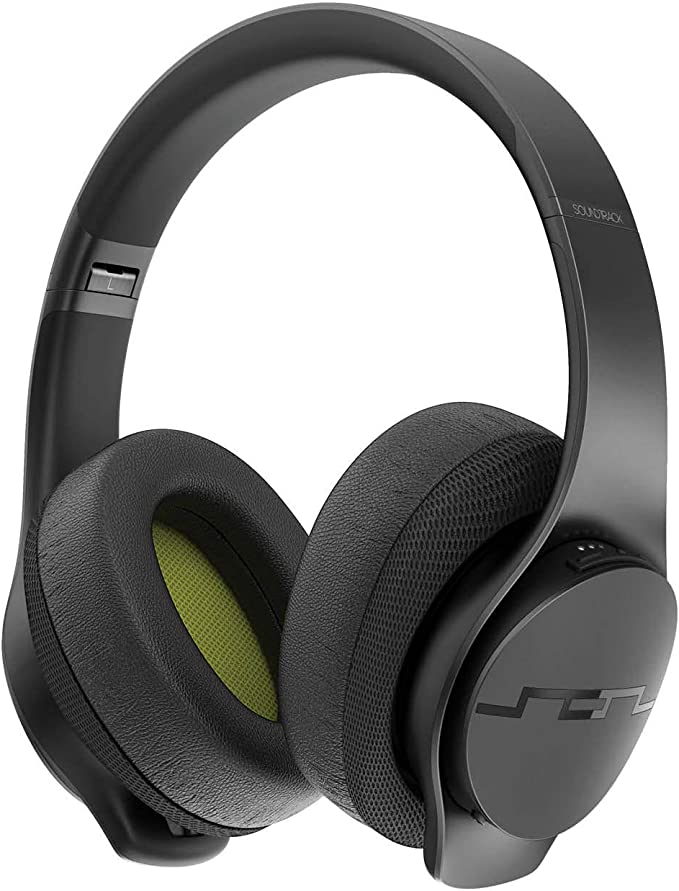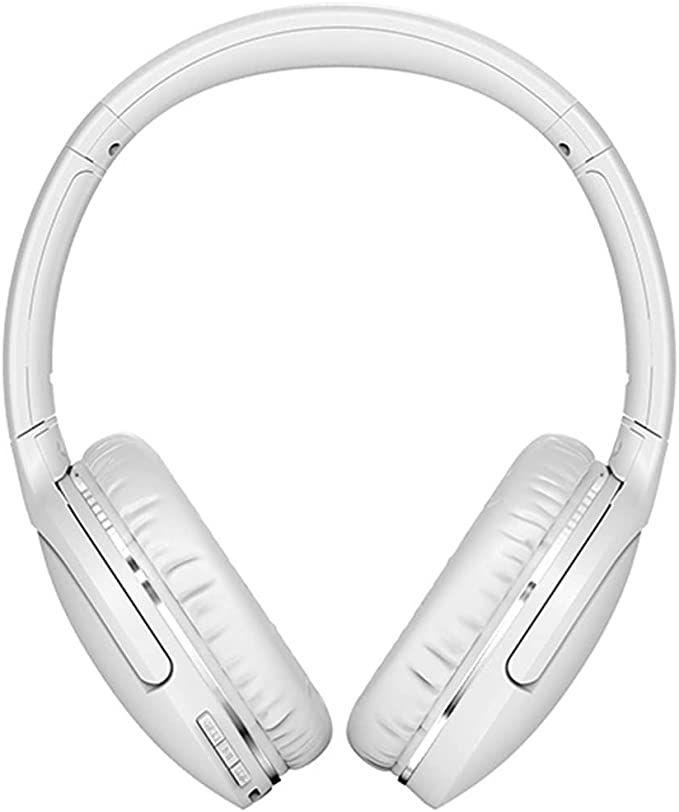Qro Eversound Wireless Earbuds: The Science of Immersive Sound and Clear Calls
Update on May 14, 2025, 4:28 p.m.
In our increasingly clamorous world, the quest for a personal sonic oasis—a space where we can immerse ourselves in pure sound or simply find a moment of quietude—has become more than a luxury; it’s a modern necessity. We seek clarity in our calls, richness in our music, and an uninterrupted flow in our podcasts and audiobooks. It’s within this context that devices like the Qro Eversound Wireless Earbuds emerge, promising a suite of technologies designed to sculpt our auditory experiences. But beyond the marketing claims and feature lists, what truly lies пригласитьbehind these compact marvels?
I’m Dr. Eleanor Vance, and I’ve spent a good part of my life fascinated by the science of sound and the technology that shapes how we hear. Today, I invite you to join me on a journey. We’ll use the Qro Eversound, with its claims of Bluetooth 5.1 connectivity, 36H Playtime, Noise Cancellation Mic, and ANC Waterproof design, not just as a product to be reviewed, but as a lens through which we can explore the fascinating interplay of physics, engineering, and human perception that defines modern audio technology. Our goal is not just to understand what these earbuds do, but how they do it, and why it matters.

Engineering Serenity: The Magic and Science of Active Noise Cancellation
The urban symphony of traffic, the drone of an airplane cabin, the incessant hum of an open office – these are the soundtracks to many of our lives. This constant barrage of sound, often dismissed as mere background noise, can significantly impact our concentration, induce stress, and diminish our enjoyment of audio content. This is where the concept of Active Noise Cancellation, or ANC, steps in, a feature prominently mentioned for the Qro Eversound Wireless Earbuds.
So, what is this “cone of silence” that ANC promises? It might seem like magic, but it’s rooted in a rather elegant principle of physics: destructive interference. Imagine throwing two identical pebbles into a still pond, slightly offset. Where a crest from one ripple meets a trough from the other, the water momentarily flattens. ANC does something remarkably similar with sound waves.
The earbuds, according to the general working principle of ANC, employ tiny, sophisticated microphones on their exterior. These act as vigilant sentinels, constantly listening to the ambient sounds around you. This captured sound is then instantaneously analyzed by an internal processor – the brain of the ANC system. This processor then generates a new sound wave that is precisely the mirror image, or “anti-noise,” of the unwanted external noise. This anti-noise is then played through the earbud’s speakers. When the original, intrusive sound wave meets this precisely crafted anti-noise wave, they effectively cancel each other out, creating a bubble of relative quiet for your ears. The Qro Eversound is described as being able to “drastically reduce the volume of background and environmental noise,” which aligns with the intended outcome of effective ANC.
Interestingly, the quest for noise cancellation has a history that predates consumer earbuds by decades. Dr. Amar Bose, founder of the Bose Corporation, is often credited with pioneering modern ANC technology in the late 1970s, initially for aviation headsets to protect pilots’ hearing and improve communication clarity on long flights. What was once a specialized technology for extreme environments has now, thankfully, trickled down into devices we can use every day.
The benefits extend far beyond just a quieter flight. Effective ANC, as aimed for by products like the Qro Eversound, can transform a noisy commute into a productive hour for an audiobook, help maintain focus in a distracting open-plan office, or simply allow for a more immersive musical experience without needing to crank up the volume to dangerous levels. It’s about reclaiming your personal soundscape.

The Audiophile’s Dream in Your Pocket? Unpacking “Premium Hi-Fi Sound”
The term “Hi-Fi,” or High Fidelity, has been a holy grail in the audio world for generations. It evokes images of meticulously crafted turntables, towering speakers, and dedicated listening rooms. At its core, Hi-Fi refers to the reproduction of sound that is exceptionally faithful to the original recording, capturing its nuances, dynamics, and full frequency spectrum with minimal distortion. When the Qro Eversound earbuds claim “PREMIUM HI-FI SOUND,” they are tapping into this legacy, promising an audio experience that delivers “deep bass and crisp mid and high ranges.”
But how does a tiny earbud strive for such lofty audio ambitions? The heart of any sound-producing device, including these earbuds, is its driver. Think of a driver as a miniature, precision-engineered loudspeaker. It typically consists of a diaphragm (a thin membrane that vibrates), a voice coil (which moves the diaphragm when an electrical audio signal passes through it), and a magnet. The quality, material, and design of these components significantly influence the sound an earbud can produce.
Let’s briefly tour the frequency spectrum mentioned:
- Deep Bass: These are the low-frequency sounds (roughly 20Hz to 250Hz) that provide a sense of power, warmth, and rhythm – the thud of a kick drum, the rumble of a bass guitar. Achieving impactful yet controlled bass in a small earbud is a significant engineering challenge, as it often requires moving a good amount of air.
- Mids (Mid-ranges): Spanning from about 250Hz to 4kHz, this is where the core of most musical information lies – vocals, the fundamental tones of most instruments, and the crucial elements of speech clarity. Well-rendered mids make audio sound natural and present.
- Highs (High Ranges or Treble): From 4kHz up to the limits of human hearing (around 20kHz for young, healthy ears), these frequencies contribute to clarity, detail, and a sense of airiness or sparkle – the shimmer of cymbals, the S-sounds in vocals, the delicate overtones of instruments.
For the Qro Eversound to deliver on its promise of “crisp mid and high ranges” alongside “deep bass,” its drivers and acoustic design must be carefully tuned. Furthermore, the “acoustic seal” created by the customizable silicone eartips (provided in Large, Medium, and Small sizes) plays a pivotal role. A snug, secure fit doesn’t just ensure comfort and keep the earbuds in place; it also prevents sound leakage and, crucially for bass reproduction, creates a sealed chamber that allows the low frequencies to resonate properly. Without this seal, bass can sound thin and anemic, and much of the “Hi-Fi” experience is lost.
It’s worth noting that the perception of “good sound” is a fascinating blend of objective engineering and subjective human experience. While engineers can measure frequency response, distortion, and other parameters, how an individual ultimately perceives and enjoys that sound can be influenced by personal preference, listening habits, and even the shape of their ear canal. The goal of Hi-Fi, however, remains to get as close as possible to the artist’s original intent, providing a clean and accurate canvas for your audio.

“Can You Hear Me NOW?” – The Intricacies of Clear Calls with ENC
In our connected lives, wireless earbuds are not just for music; they are essential communication tools. We take calls on the go, in busy streets, bustling cafes, and windy parks. This is where the promise of “CLEAR CALL QUALITY” from the Qro Eversound, supported by “Microphones located on the stems” and “ENC Technology (HD Calls),” becomes critically important.
The frustration of a call plagued by background noise is universal. Your voice gets drowned out, the other person struggles to understand you, and communication breaks down. Environmental Noise Cancellation (ENC) technology aims to tackle this specific problem head-on.
It’s important to distinguish ENC from ANC. While ANC is primarily for your listening experience (canceling noise before it reaches your ears), ENC is about ensuring the person on the other end hears you clearly. It focuses on cleaning up the audio signal picked up by the earbud’s microphones before it’s transmitted.
How does it generally work? Modern ENC systems often rely on a combination of strategically placed multiple microphones and sophisticated digital signal processing (DSP) algorithms.
- Microphone Arrays: By using more than one microphone (the Qro Eversound mentions mics on the stems), the system can better distinguish your voice from surrounding noise. Your voice will arrive at each microphone at slightly different times and intensities compared to sounds originating further away.
- Beamforming (a common technique): This is a signal processing technique that can be used with microphone arrays to create a directional “beam” of sensitivity towards the speaker’s mouth. Sounds coming from outside this beam are attenuated or reduced in volume.
- Noise Suppression Algorithms: These algorithms are trained to identify the characteristics of human speech versus common environmental noises (traffic, wind, chatter). They then work to filter out or reduce the non-speech sounds, leaving your voice clearer and more prominent.
The claim of “HD Calls” suggests an ambition to deliver a high-definition voice experience, where your voice sounds natural and is easily intelligible, even if your surroundings are less than ideal. The Qro Eversound description states its external mics “sift through all the noise and isolate your voice so the caller on the other end hears your voice and only your voice.” This is precisely the goal of an effective ENC system.
The Unseen Symphony of Connection: Navigating the World of Bluetooth 5.1
The magic of wireless earbuds lies in their ability to sever the physical tether to our audio devices, offering us unparalleled freedom of movement. This liberation is made possible by Bluetooth technology, and the Qro Eversound specifies it uses Bluetooth 5.1.
Bluetooth, named rather whimsically after the 10th-century Danish king Harald “Bluetooth” Gormsson (famed for uniting disparate Danish tribes, just as Bluetooth technology aims to unite devices), is a wireless communication standard for exchanging data over short distances using UHF radio waves. Since its inception in the late 1990s, it has undergone numerous revisions, each bringing improvements.
So, what does Bluetooth 5.1 generally bring to the table compared to its predecessors? While not all features of a Bluetooth version are directly utilized by every device category, Bluetooth 5.1 (released in January 2019) is part of the Bluetooth Low Energy (LE) lineage and introduced features focused on:
- Improved Location Services: While “Angle of Arrival” (AoA) and “Angle of Departure” (AoD) for precise direction finding are key features of 5.1, these are more relevant for asset tracking than standard audio streaming.
- GATT Caching Enhancements: This can lead to faster (re)connection times in some scenarios.
- Advertising Enhancements: More efficient broadcasting of information by devices.
For audio devices like the Qro Eversound, the more pertinent benefits often come from the underlying stability, efficiency, and bandwidth capabilities that mature Bluetooth standards (like those in the 5.x series) provide for established audio profiles such as A2DP (Advanced Audio Distribution Profile). The promise of “Connect and go” and reliable connection after initial setup (“you don’t have to worry about connection ever again”) leans on these mature aspects of the technology. A stable, efficient Bluetooth connection is fundamental for an uninterrupted and high-quality wireless audio experience, minimizing dropouts and preserving battery life.
Crafted for Life’s Soundtrack: Practical Design Meets Protective Tech
Beyond the core audio and communication technologies, a truly great pair of wireless earbuds must also excel in the everyday practicalities of fit, durability, and user interaction. The Qro Eversound touches upon several of these crucial aspects.
Ears Come in All Shapes: The human ear is a wonderfully unique structure, which presents a significant ergonomic challenge for earbud designers. The Qro Eversound addresses this by including Large, Medium, and Small silicone eartips. Finding the correct eartip size is paramount for several reasons:
- Comfort: An ill-fitting earbud can cause discomfort or pain, especially during extended listening sessions.
- Secure Fit: You don’t want your earbuds falling out during a jog or a sudden movement.
- Acoustic Seal: As mentioned earlier, this is vital for optimal sound quality, particularly bass response, and it also contributes significantly to passive noise isolation – physically blocking out some external sound before ANC even kicks in.
Defying Drizzle and Drips: The IPX4 Rating Unveiled: Life is unpredictable, and so is the weather. For earbuds designed to be your constant companions, some level of protection against the elements is essential. The Qro Eversound boasts an IPX4 rating. Let’s break this down:
- IP stands for “Ingress Protection.”
- The first digit (represented by ‘X’ here) refers to protection against solid particles (like dust). An ‘X’ means it hasn’t been specifically tested or rated for dust ingress.
- The second digit, ‘4’ in this case, refers to protection against liquids. An IPX4 rating signifies that the earbuds are protected against splashing water from any direction.
In real-world terms, this means the Qro Eversound should comfortably withstand sweat during an intense workout, a light rain shower during your commute, or accidental splashes. This adds a layer of durability and peace of mind.
Welcoming the World When Needed: The Genius of Transparency Mode: While Active Noise Cancellation is fantastic for immersion, there are times when you need to be aware of your surroundings. This is where Transparency Mode, listed as a special feature for the Qro Eversound, comes into play. This clever feature uses the same external microphones that ANC employs, but instead of canceling out external sounds, it selectively allows them to pass through into your ears, mixed with your audio.
This is incredibly useful for:
- Safety: Hearing traffic while walking or cycling.
- Convenience: Having a quick conversation with a colleague or barista without removing your earbuds.
- Awareness: Not missing important announcements at an airport or train station.
It offers the best of both worlds: isolation when you want it, and awareness when you need it.
The Unending Beat: Battery Life and the Convenience of On-the-Go Charging: Wireless freedom is only as good as the battery life that sustains it. The Qro Eversound is stated to offer up to 5 hours of battery life for each earbud and an additional 30+ hours with the included charging case. This sort of endurance is crucial for all-day use. The charging case acts as a portable power bank, recharging the earbuds whenever they’re placed inside. The case itself is said to recharge in 1.5 hours. This extended playtime means less “battery anxiety” and more uninterrupted listening.
Effortless Interaction: The Simplicity of Touch Controls: Modern earbuds often forgo physical buttons for sleek touch controls. While the specifics aren’t detailed for the Qro Eversound beyond mentioning the feature, touch controls typically allow users to play/pause music, skip tracks, answer/end calls, and activate features like ANC or a voice assistant with simple taps or swipes on the earbuds themselves. This offers a convenient way to manage your audio without constantly reaching for your phone.
A Nod to Support: Finally, Qro highlights its nature as a Chicago-based company and provides a US hotline number (1 (800) 760 1688) for support. For consumers, knowing there’s accessible customer service can be a significant factor, offering reassurance that help is available for any issues regarding pairing, connection, or other operational queries.

Your Evolving Soundscape – Informed, Immersive, and Inspiring
As we’ve journeyed through the technologies embedded within a device like the Qro Eversound Wireless Earbuds, it becomes clear that these compact companions are more than just simple accessories. They are a confluence of decades of scientific research and engineering innovation, spanning acoustics, materials science, wireless communication, and digital signal processing. From the sophisticated dance of sound waves in Active Noise Cancellation to the pursuit of faithful audio reproduction in Hi-Fi sound, from the algorithms that ensure call clarity to the robust wireless link provided by Bluetooth, each feature is a testament to human ingenuity.

Understanding the “how” and the “why” behind these technologies doesn’t just demystify them; it empowers us. It allows us to appreciate the intricate science at play, to make more informed choices as consumers, and to perhaps even listen a little differently – with a newfound appreciation for the quiet marvels that shape our personal soundscapes.
The journey of personal audio is ever-evolving. What was once the domain of bulky headphones and tangled wires has become sleek, intelligent, and deeply integrated into the fabric of our lives. As these technologies continue to advance, bringing us ever closer to our ideal auditory experiences, it’s a reminder that even the smallest devices can carry a profound legacy of scientific endeavor, all aimed at enriching our daily engagement with the world of sound.
